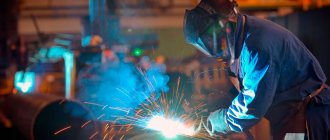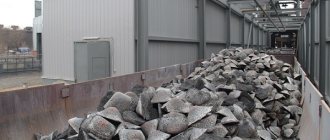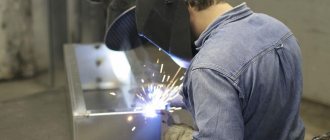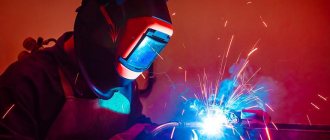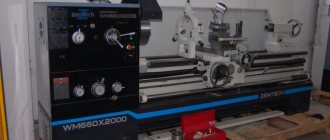Safety and regulations [ edit | edit code]
There are international and national requirements for lighters aimed at safe handling. International standard ISO 9994:2005(E) “Lighters - Safety specification”, which describes the technical requirements for lighters and testing methods. For example, to produce a flame, a minimum of two user actions with a force of at least 15 Newtons is stipulated. The maximum flame height, resistance to falling and continuous burning, resistance to ambient temperatures, requirements for warning symbols, etc. are also specified. [6]
Some regional standards, such as the European EN 13869:2002, limit the design of lighters so that they are not attractive to young children. For example, made in the form of objects that are not lighters (animals, cartoon characters, lanterns, cameras, etc.), which can be mistaken by children for toys and lead to injuries, burns and fires in their hands [2] [3] [4] [5] .
What is the fire temperature in a regular lighter?
Generally speaking, the fire temperature of any flame is not a constant value and depends on in which part of the flame this temperature is measured. Thus, the combustion temperature of an ordinary pocket lighter with a propane-butane mixture reaches 800-1000 degrees Celsius.
A common lighter today is a lighter that runs on a mixture of purified liquefied butane, isobutane, or a mixture of butane and propane. Gasoline lighters are now rarely used due to the unpleasant smell of gasoline. It is not the fuel itself that burns in the lighter. A mixture of propane and butane is in the liquid phase, but under pressure. Excess pressure occurs due to the fact that the boiling point of liquid gases is noticeably lower than the temperature of atmospheric air. Passing through the lighter reducer, the fuel goes into the gaseous phase and mixes with air. It is this gas mixture that is ignited using sparks from flint (an alloy of cerium, lanthanum, iron, magnesium, etc.) or from a piezoelectric ignition device. The flame temperature in different models can be different. The temperature distribution in the flame is quite complex depending on the method of supplying fuel and oxidizer and reaches its greatest value on the axis near the end of the flame core. For a regular lighter, a temperature of 900-1000 degrees is the norm. Oddly enough, the flame temperature of a simple lighter is even lower than that of a candle, because... The calorific value of paraffin is higher. But in advanced turbo lighters (sometimes called windproof), this value can reach 1300 degrees, and sometimes more. Even greater significance is achieved not in lighters, but in gas burners with either pressurized air or oxygen supplied as an oxidizer.
RPI.su is the largest Russian-language database of questions and answers. Our project was implemented as a continuation of the popular service otvety.google.ru, which was closed and deleted on April 30, 2015. We decided to resurrect the useful Google Answers service so that anyone can publicly find out the answer to their question from the Internet community.
All questions added to the Google Answers site have been copied and stored here. Old usernames are also displayed as they previously existed. You just need to register again to be able to ask questions or answer others.
To contact us with any questions ABOUT THE SITE (advertising, cooperation, feedback about the service), write to . Only post all general questions on the site; they will not be answered by mail.
Open fire temperature: temperature of the fire in the lighter, influencing factors and classification
A flame is a phenomenon that is caused by the glow of a gaseous hot medium. In some cases, it contains dispersed solids and (or) plasma, in which transformations of reagents of a physical and chemical nature occur. It is they that lead to self-heating, heat release and glow.
The gaseous environment of the flame contains charged particles - radicals and ions . This explains the existence of electrical conductivity of the flame and its interaction with electromagnetic fields.
Devices that can suppress a fire, change its shape, or tear it away from flammable materials using electromagnetic radiation are built on this principle.
The glow of fire is divided into two types:
- non-luminous;
- glowing.
Almost every glow is visible to the human eye, but not every one is capable of emitting the required amount of luminous flux.
The glow of the flame is determined by the following factors.
- Temperature.
- The density and pressure of the gases that participate in the reaction.
- Presence of solid matter.
The most common cause of glowing is the presence of a solid substance in the flame .
Many gases burn with a faintly luminous or non-luminous flame.
Of these, the most common are hydrogen sulfide (blue flame, like combustion), ammonia (pale yellow), methane, carbon monoxide (pale blue flame), and hydrogen.
The vapors of some volatile liquids burn with a barely luminous flame (alcohol and carbon disulfide), and the flame of acetone and ether becomes slightly smoky due to the slight release of carbon.
Restorative flame
This part is closest to the center or located just below it. There is little oxygen for combustion and a lot of fuel. If a substance containing oxygen is introduced into this area, it will be taken away from the substance.
Fire temperature in a lighter
A lighter is a portable device that is designed to produce fire. It can be gasoline or gas, depending on the fuel used. There are also lighters that do not contain their own fuel. They are designed to ignite a gas stove. A high-quality turbo lighter is a relatively complex device. The fire temperature in it can reach 1300 degrees.
Chemical composition and color of flame
Pocket lighters are small in size, which allows them to be carried without any problems. It is quite rare to find a table lighter. After all, due to their large size, they are not intended to be carried. Their designs are varied . There are fireplace lighters. They have a small thickness and width, but are quite long.
Today, promotional lighters are becoming popular. If there is no electricity in the house, then it is impossible for it to light a gas stove. The gas is ignited by the resulting electric arc. The advantages of these lighters are the following qualities.
- Durability and simplicity of design.
- Fast and reliable gas ignition.
The first lighter with modern flint was created in Austria in 1903 after the invention of ferrocerium alloy by Baron Karl Auer von Welsbach.
The development of lighters accelerated during the First World War. The soldiers began to use matches in order to see the road in the dark, but their location was revealed by the intense flash when ignited. The need for fire without significant flash fueled the development of lighters.
At that time, the leaders in the production of flint lighters were Germany and Austria. Such a portable device, which is designed to produce fire, found in the pocket of many smokers, can be fraught with many dangers if handled incorrectly.
The lighter should not spray sparks around itself during operation. The fire should be stable and even. The fire temperature in pocket lighters reaches approximately 800-1000 degrees. The red or orange glow is caused by carbon particles that have become hot.
For household burners and turbo lighters, butane gas is mainly used, which burns easily and is odorless and colorless. Butane is obtained by processing oil and its fractions at high temperatures.
Butane is a flammable hydrocarbon, but it is absolutely safe in modern lighter designs.
Such lighters are very useful in everyday life. They can set fire to any flammable material. The set of turbo lighters includes a table stand.
The color of the flame depends on the combustible material and combustion temperature.
The flame of a fire or fireplace generally has a motley appearance .
The burning temperature of wood is lower than the burning temperature of a candle wick. It is because of this that the color of the fire is not yellow, but orange.
Copper, sodium and calcium glow in different colors at high temperatures.
The electric lighter was invented in 1770. In it, a hydrogen jet was ignited by a spark from an electrophore machine. Over time, gasoline lighters gave way to gas lighters, which are more convenient. They must contain a battery - a source of energy.
Not very long ago, touch lighters appeared, in which, without mechanical action, gas is ignited by acting on a touch sensor. Pocket-type touch lighters. Basically, they contain advertising-type information, which is printed using pad or silk-screen printing.
How many degrees does a gas oven produce?
For example, many electric ovens have oven temperatures up to 290 degrees Celsius, while gas ovens can reach 250 degrees Celsius.
Interesting materials:
How to open a salt shaker mill? How to open a message in Viber? How to open your Twitter profile? How to open a fishing rod in Far Land 5? How to distinguish arctic fox fur from mink? How do I cancel my PS Plus subscription? How do I unsubscribe via email? How to cancel synchronization with Yandex disk? How to uninstall on Windows 10? How to undo all Clipping Masks in Illustrator?
What are lighters with colored flames called?
Comrade Goose, you answered almost everything yourself. Lighters are not called anything. It's like asking what different colored cars are called. Simply, a ball with a certain substance (maybe some metal) is soldered into the place where the flame is, so it gives a different color to the color of the flame. And =cricket= has nothing to do with it. I've never seen =cricket= with colored flames.
Vova is right...probably
Such lighters are not called anything. You can just put this ball on the autogenki. Because the flame temperature in ordinary ones (the same as Cricket) is insufficient. And in that ball there is a substance - salts of the metals that I wrote to you. (usually highly volatile). PS By the way, thank you for making my last answer the best. :))
touch.otvet.mail.ru
Flame and its classification, zones, temperature and color - Fire Info
A flame is a phenomenon that is caused by the glow of a gaseous hot medium. In some cases, it contains dispersed solids and (or) plasma, in which transformations of reagents of a physical and chemical nature occur. It is they that lead to self-heating, heat release and glow.
The gaseous environment of the flame contains charged particles - radicals and ions . This explains the existence of electrical conductivity of the flame and its interaction with electromagnetic fields.
Devices that can suppress a fire, change its shape, or tear it away from flammable materials using electromagnetic radiation are built on this principle.
The glow of fire is divided into two types:
- non-luminous;
- glowing.
Almost every glow is visible to the human eye, but not every one is capable of emitting the required amount of luminous flux.
The glow of the flame is determined by the following factors.
- Temperature.
- The density and pressure of the gases that participate in the reaction.
- Presence of solid matter.
The most common cause of glowing is the presence of a solid substance in the flame .
Many gases burn with a faintly luminous or non-luminous flame.
Of these, the most common are hydrogen sulfide (blue flame, like combustion), ammonia (pale yellow), methane, carbon monoxide (pale blue flame), and hydrogen.
The vapors of some volatile liquids burn with a barely luminous flame (alcohol and carbon disulfide), and the flame of acetone and ether becomes slightly smoky due to the slight release of carbon.
Flame color
Flame
Flames come in different colors. Look into the fireplace. Yellow, orange, red, white and blue flames dance on the logs. Its color depends on the combustion temperature and the combustible material. To visualize this, imagine the spiral of an electric stove.
If the tile is turned off, the spiral turns are cold and black. Let's say you decide to heat up the soup and turn on the stove. At first the spiral turns dark red. The higher the temperature rises, the brighter the red color of the spiral.
When the tile reaches its maximum temperature, the coil turns orange-red.
Naturally, the spiral does not burn. You don't see the flame. She's just really hot. If you heat it further, the color will change. First, the color of the spiral will turn yellow, then white, and when it heats up even more, a blue glow will emanate from it.
What determines the color of the flame
Something similar happens with fire. Let's take a candle as an example. Different areas of a candle flame have different temperatures. Fire needs oxygen.
If you cover a candle with a glass jar, the fire will go out. The central area of the candle flame adjacent to the wick consumes little oxygen and appears dark.
The top and side areas of the flame receive more oxygen, so these areas are brighter.
As the flame moves through the wick, the wax melts and crackles, breaking into tiny carbon particles. (Coal also consists of carbon.) These particles are carried upward by the flame and burn.
They are very hot and glow like the spiral of your tile. But the carbon particles are much hotter than the coil of the hottest tile (carbon combustion temperature is approximately 1,400 degrees Celsius). Therefore, their glow is yellow.
Near the burning wick, the flame is even hotter and glows blue.
The flames of a fireplace or fire are mostly motley in appearance. Wood burns at a lower temperature than a candle wick, so the base color of the fire is orange rather than yellow. Some carbon particles in a fire flame have a fairly high temperature. There are few of them, but they add a yellowish tint to the flame.
Cooled particles of hot carbon are soot that settles on the chimneys. The burning temperature of wood is lower than the burning temperature of a candle. Calcium, sodium and copper, when heated to high temperatures, glow in different colors. They are added to rocket powder to color the lights of holiday fireworks.
Flame color and chemical composition
The color of the flame may vary depending on the chemical impurities contained in the logs or other flammable substance. The flame may contain, for example, sodium impurities. Sodium is a component of table salt. When sodium is heated, it turns bright yellow. Calcium may be released into the fire.
What is the temperature of the fire in the lighter?
A flame is a phenomenon that is caused by the glow of a gaseous hot medium. In some cases, it contains dispersed solids and (or) plasma, in which transformations of reagents of a physical and chemical nature occur. It is they that lead to self-heating, heat release and glow.
The gaseous environment of the flame contains charged particles - radicals and ions . This explains the existence of electrical conductivity of the flame and its interaction with electromagnetic fields.
Devices that can suppress a fire, change its shape, or tear it away from flammable materials using electromagnetic radiation are built on this principle.
Oxidizing flame
It is located in the very top part of the fire, which has the highest temperature. In this zone, flammable substances are almost completely converted into combustion products. There is a lack of fuel and an excess of oxygen . It is for this reason that substances that are placed in this zone are intensively oxidized.
Fire temperature of different flame sources
The temperature of the fire makes you see familiar things in a new light - a match flashing white, the blue glow of a gas stove burner in the kitchen, orange-red tongues above a flaming tree. A person does not pay attention to the fire until his fingertips are burned. Or it won't burn the potatoes in the frying pan. Or it won’t burn through the soles of sneakers drying over a fire.
When the first pain, fear and disappointment pass, the time for philosophical reflection comes. About nature, colors, fire temperature.
Burns like a match
Briefly about the structure of a match. It consists of a stick and a head. Sticks are made from wood, cardboard and cotton cord impregnated with paraffin. The wood chosen is soft species - poplar, pine, aspen. The raw material for sticks is called match straw. To avoid smoldering of the straws, the sticks are impregnated with phosphoric acid. Russian factories make straw from aspen.
The head of a match is simple in shape, but complex in its chemical composition. The dark brown head of the match contains seven components: oxidizing agents - Berthollet salt and potassium dichromate; glass dust, red lead, sulfur, bone glue, zinc white.
The head of the match ignites when rubbed, heating up to one and a half thousand degrees. Ignition threshold, in degrees Celsius:
- poplar – 468;
- aspen – 612;
- pine – 624.
The fire temperature of a match is equal to the fire temperature of wood. Therefore, the white flash of the sulfur head is replaced by the yellow-orange tongue of the match.
If you look closely at a burning match, you will see three zones of flame. The bottom one is cool blue. The average is one and a half times warmer. The top is the hot zone.
Fire artist
When you hear the word “bonfire,” nostalgic memories flash no less brightly: the smoke of a fire, creating a trusting atmosphere; red and yellow lights flying towards the ultramarine sky; reeds change from blue to ruby red; crimson cooling coals in which “pioneer” potatoes are baked.
The changing color of a flaming tree indicates fluctuations in the temperature of the fire in the fire. Wood smoldering (darkening) begins at 150°. Fire (smoke) occurs in the range of 250-300°.
With the same supply of oxygen, tree species burn at different temperatures. Accordingly, the degree of fire will also be different.
Birch burns at 800 degrees, alder at 522°, and ash and beech at 1040°.
But the color of the fire is also determined by the chemical composition of the burning substance. The yellow and orange color of the fire comes from sodium salts. The chemical composition of cellulose contains both sodium and potassium salts, which give burning wood coals their red hue. Romantic blue lights in a wood fire arise due to a lack of oxygen, when instead of CO2, CO is formed - carbon monoxide.
Science enthusiasts measure the temperature of the fire in a fire with a device called a pyrometer. Three types of pyrometers are made: optical, radiation, spectral. These are non-contact devices that allow you to evaluate the power of thermal radiation.
Studying fire in our own kitchen
Kitchen gas stoves operate on two types of fuel:
- Trunk natural gas methane.
- Propane-butane liquefied mixture from cylinders and gas holders.
The chemical composition of the fuel determines the fire temperature of a gas stove. Methane, when burned, forms a fire with a power of 900 degrees at the top point.
Combustion of the liquefied mixture produces heat up to 1950°.
An attentive observer will note the uneven coloring of the burner reeds of a gas stove. Inside the fire torch there is a division into three zones:
- Dark area located near the burner: there is no combustion here due to lack of oxygen, and the temperature of the zone is 350°.
- A bright area lying in the center of the torch: the burning gas heats up to 700°, but the fuel does not burn completely due to a lack of oxidizer.
- Translucent upper section: reaches a temperature of 900°, and gas combustion is complete.
The figures for the temperature zones of the fire torch are given for methane.
Construction [edit | edit code]
Fuel lighters [edit | edit code]
Most lighters work on the principle of igniting a special flammable fuel poured into the lighter. The burning fuel serves as a source of fire for the lighter user.
Fuel [edit | edit code]
Easily evaporating liquid hydrocarbons are most often used as fuel, most often gasoline for so-called gasoline lighters and liquefied hydrocarbon gases for gas lighters. The fundamental difference between them is that the fuel of gas lighters evaporates very quickly and is therefore contained in sealed containers under low pressure formed by evaporating gas vapor. Gasoline evaporates relatively slowly and therefore does not require a sealed container.
Gas lighters use a liquefied mixture of propane and butane as fuel, which, after passing through the reducer, evaporates, forming a flammable mixture of gas and air.
Gasoline lighters burn gasoline vapors.
Depending on the type of fuel, the temperature of the lighter flame can reach the following values:
Fuel supply [edit | edit code]
In gas lighters, a gas reducer, usually made in the form of a porous plastic rod, is used to dose gas from the container to the combustion zone. There is a gradual decrease in gas pressure. There are lighters with low gas vapor pressure at the outlet of the reducer and so-called turbo lighters with high vapor pressure. Turbo lighters produce a dense, directed flow of gas, which is much more difficult to knock out with the wind.
Gasoline lighters use a replaceable cotton wick.
Arson [edit | edit code]
For the initial ignition of lighter fuel, several principles are used:
- principle of flint: sparking from shavings of pyrophoric alloys (ferrocerium), formed from friction with flint;
- piezoelectric ignition: ignition by an electric spark that occurs when the air gap is broken down by high voltage from a piezoelectric element;
- catalytic ignition of organic vapors.
Electric lighters [ edit | edit code]
There are lighters without fuel that create the required temperatures by passing current through a wire or a long-term electrical discharge (spark or arc).
Initially, such lighters were stationary, operating from an electrical outlet. They were common in the second half of the 20th century, including in the USSR. The principle of operation is based on a spark discharge that occurs at the contacts when switching an inductive load. The cyclic action was ensured by a spring and an electromagnet. The contact, under the action of the spring, closed the circuit, turning on the electromagnet, which opened the contact and de-energized the electromagnet; then the process was repeated. The resulting series of sparks made it possible to ignite gas in household gas equipment. The advantages of such lighters were reliable and fast ignition of gas, simplicity and durability of the design, and lack of maintenance. Disadvantages: dependence on the availability of electricity, high level of radio interference, danger of electrical injuries.

